"Felice Carena, Still Life, 1959. Oil On Panel, 25 X 55 Cm"
Felice Carena
Turin, 1879 – Venice, 1966
Still Life, 1959
Oil on panel, 25 x 55 cm
Signed lower right
On the reverse: signature, label and stamps of Galleria d'Arte Moderna Il Traghetto, Venice
Felice Carena was born in Cumiana (near Turin) in 1879 and trained at the Accademia Albertina under the guidance of Giacomo Grosso, later becoming part of the Roman artistic scene at the turn of the 20th century. In his youth, he embraced the Symbolist and spiritualist atmosphere of early 20th-century Italy before entering a profound phase of pictorial renewal. After a period in Florence—where he ran a private academy attended by artists such as Afro and Mirko Basaldella—he settled permanently in Venice after World War II, where his style reached full lyrical and contemplative maturity.
Carena's painting is characterized by a deep sensitivity to matter, a careful modulation of light, and a sense of the sacred that permeates even his simplest subjects, such as his renowned still lifes. He held the chair of painting at the Academy of Fine Arts in Florence and later became a key figure in the postwar Venetian art scene. His works are now housed in major Italian museums such as the Galleria Nazionale d’Arte Moderna in Rome, the Galleria d’Arte Moderna in Turin, and the Galleria Internazionale d’Arte Moderna at Ca' Pesaro in Venice.
This
Still Life from 1959 is fully representative of the final phase of Carena’s output, marked by soft tonalities, a rich impasto brushstroke, and a meditative sense of time. It may be compared to:
the Still Life with Black Bottle and Bread (1950s), held at the Galleria d’Arte Moderna in Turin, the artist’s hometown, where the objects are treated with the same sacred, suspended atmosphere, rendered in earthy tones and tonal harmonies;
the Still Life with Shell at the Ca' Pesaro Museum in Venice, where the marine motif becomes an allegory of time and fragile beauty—just as in the present work.
In these canvases, Carena distills the lessons of Cézanne and Morandi through an intimate lens, with a language that transcends mere representation and borders on the metaphysical.
The present work is a rare and well-preserved still life painted in oil on panel in 1959. In a horizontal composition, four main objects stand out against a neutral surface: a dark, almost shapeless bottle, a large seashell, and two pale vases, one of them overturned. The forms emerge from a dusty, soft atmosphere without sharp contours, recalling the lyrical intensity of Carena’s late period.
The palette is warm and earthy, dominated by ochres, browns, and antique pinks, with cooler accents of slate blue and grey in the shadows. The light is diffuse rather than directional, enveloping the objects in a uniform glow that gives them a silent, almost sacred presence. Though realistic, the objects seem idealized, as if meditated upon before being painted.
The signature “CARENA” in reddish brown is clearly legible at lower right. On the reverse, the label from
Galleria d'Arte Moderna Il Traghetto in Venice—active in the 1950s–60s and an important venue for 20th-century Italian painting—confirms the work’s authenticity and prestigious provenance. The gallery’s stamps further document the piece.
This
Still Life from 1959 is a quintessential example of Felice Carena’s poetic maturity, capable of transforming reality into an image of contemplation and silence. With its provenance from a prominent Venetian gallery, the work belongs among the finest Italian postwar painting experiences and deserves to be featured in a museum or a private collection focused on 20th-century Italian art.



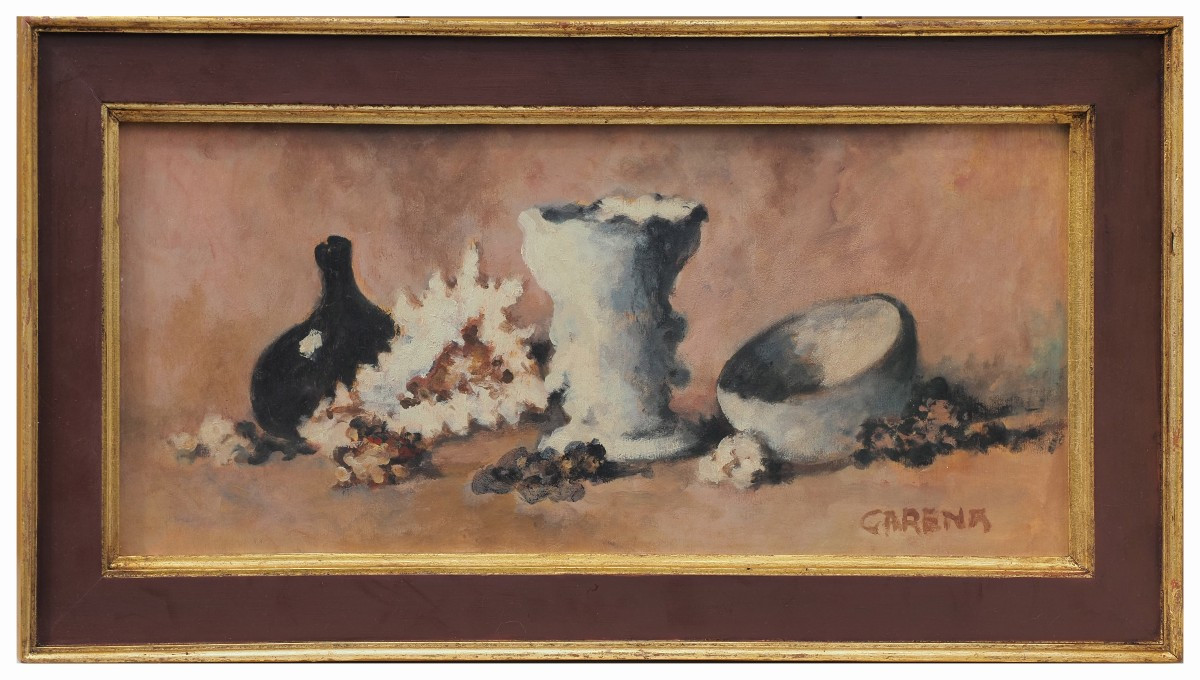
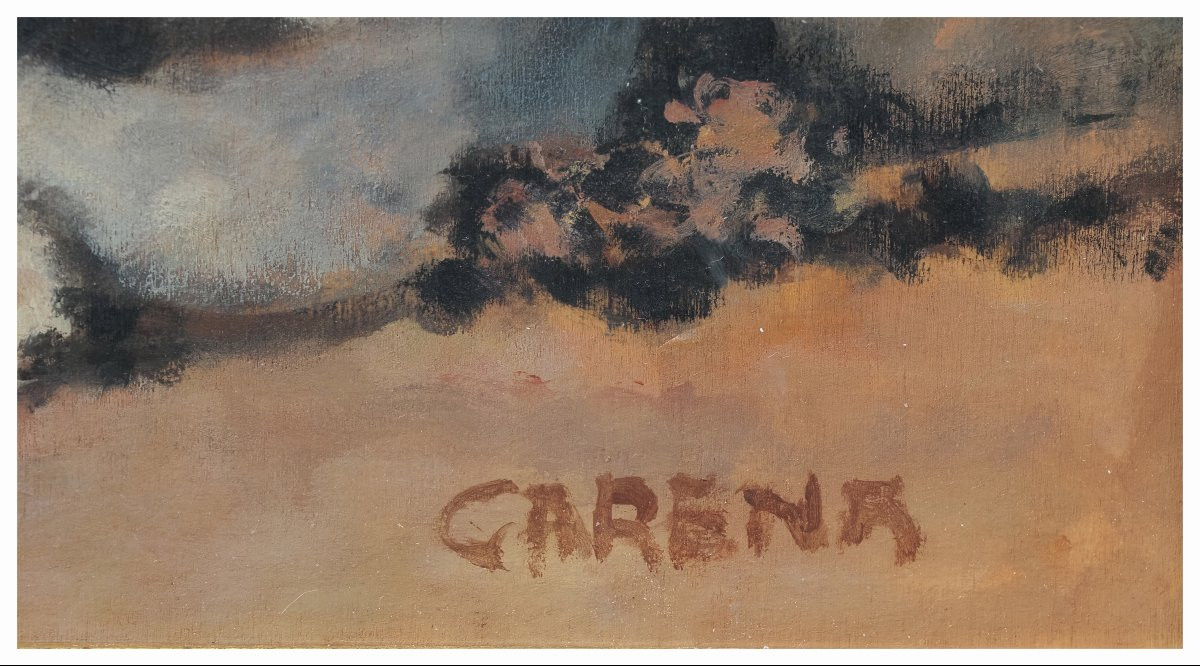

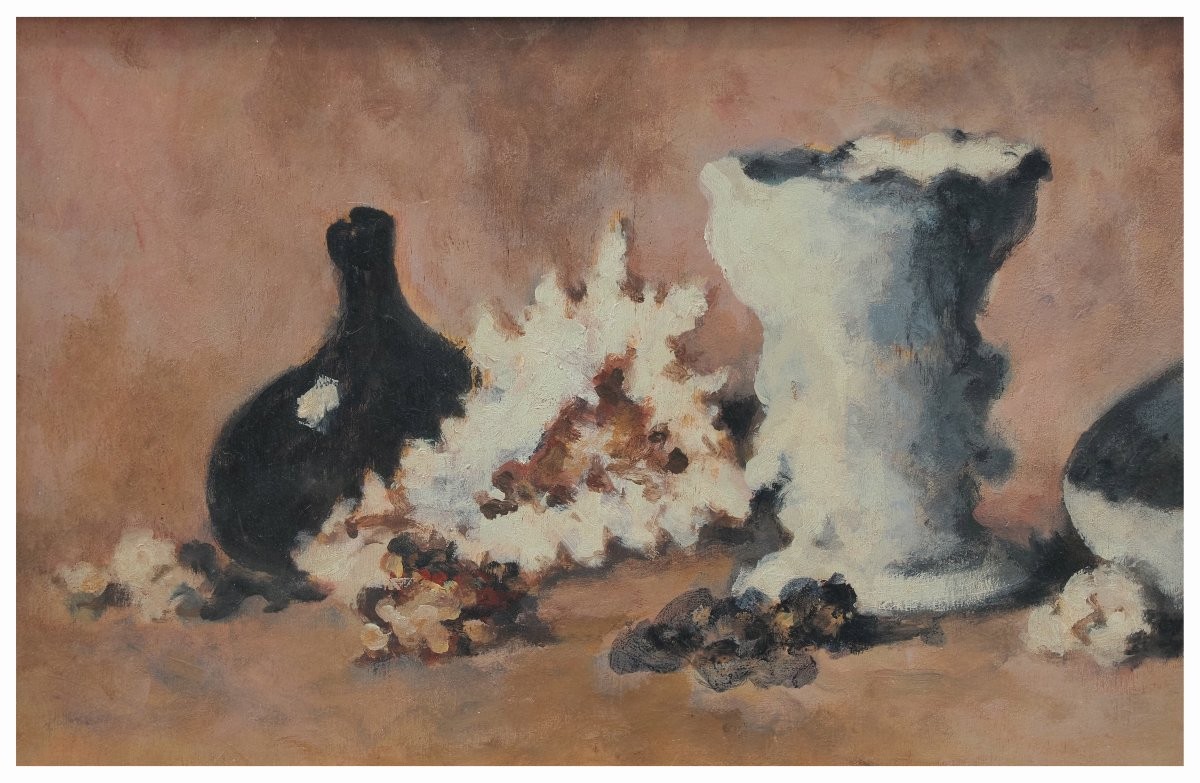
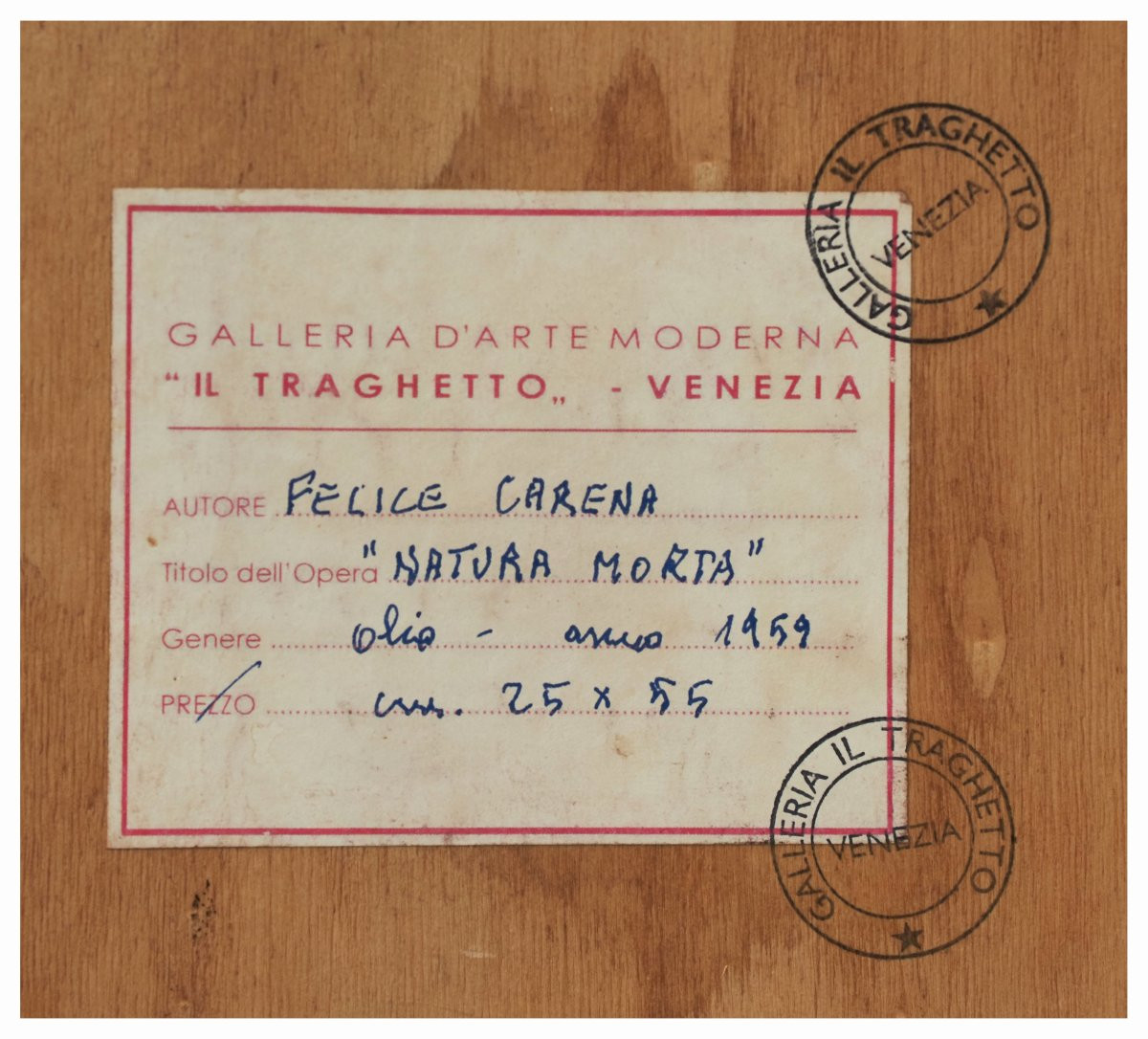






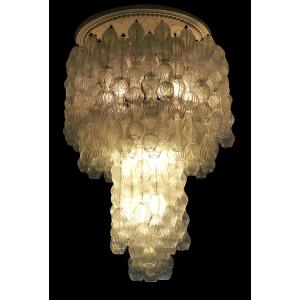










 Le Magazine de PROANTIC
Le Magazine de PROANTIC TRÉSORS Magazine
TRÉSORS Magazine Rivista Artiquariato
Rivista Artiquariato
